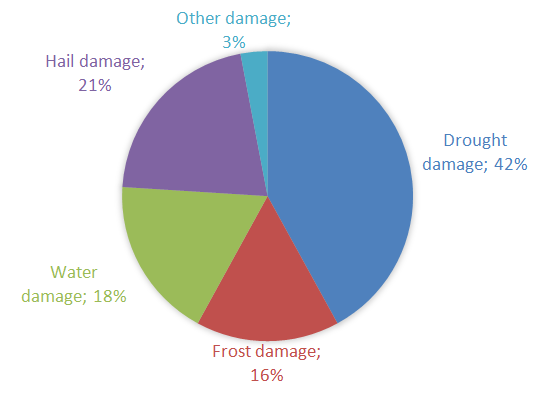Agriculture
Agriculture is one of the sectors most vulnerable to climate change. In addition to warming and droughts, the most damage caused in crops and livestock are inflicted by plant and animal pathogens, as well as extreme meteorological events such as: floods, inland inundation, intense precipitation, mudslides, landslides, soil erosion, windstorms, wind erosion, hails, sleets, strong UVB radiation, snow storms, early and late frosts.
Areas covered with inland inundation annually add up to 4.4 million hectares of which 2.7 million hectares are intensively cultivated. Droughts and heat waves are countrywide a climate related problem. The graph below shows the distribution of damage types in agriculture in 2009.

Precipitation affects agricultural production much more seriously than temperatures changes: dry periods in the spring and fall seasons are the most harmful. The changes in yields caused by climate related events can have an effect of EUR 380 000 000 in case of cereals only.
The effects of climate change in husbandry is twofold: hot and dry periods on the one hand hit pastures and decrease their productivity, on the other hand, heat waves burden animals and decrease their productivity too. New parasits and deseases can also appear due to the changing conditions.
Data of Energiaklub's survey shows that more than 50% of Hungarian population experiences the proliferation of vermin and the appearance of new, unknown types of vermin. More than 80% of the respondents having crops and/or truck farm are worried about climate change causing damage to their crops.